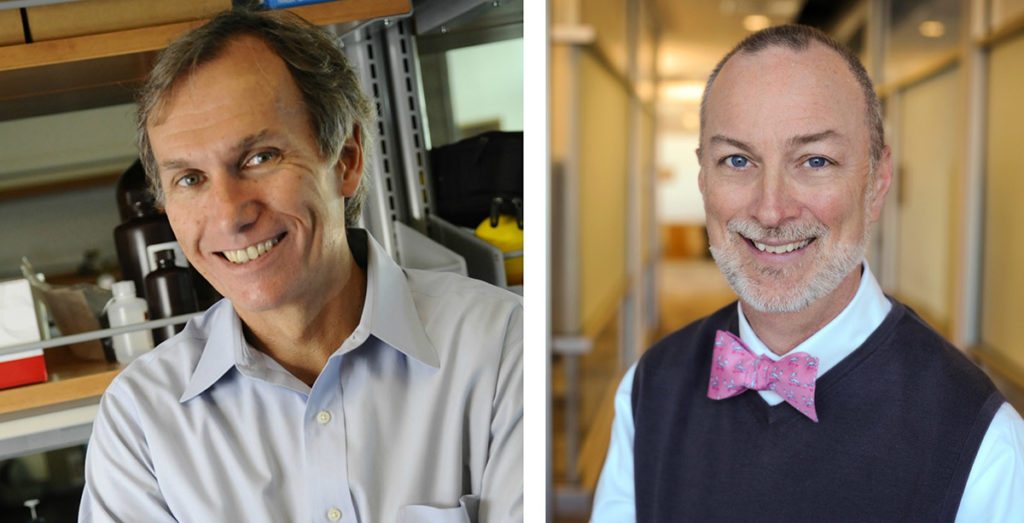People who have apple-shaped bodies carry more weight around their abdomen compared to people with pear-shaped bodies, who carry weight around their hips and thighs. For over 50 years scientists have known that certain body shapes are also associated with health risks—apple shapes (central adiposity) are linked to a higher incidence of several chronic diseases including diabetes, heart attack, hypertension and stroke. But until now, researchers didn’t have the tools to explain exactly how fat distribution works and why it’s linked to health and risk of disease.
A new $2.7M NIH grant is going to change that. Steven Smith, M.D., senior vice president and chief scientific officer of Florida Hospital, and scientific director of the Translational Research Institute for Metabolism and Diabetes, and Timothy Osborne, Ph.D., professor and director of the Integrative Metabolism Program at Sanford Burnham Prebys Medical Discovery Institute (SBP), are now co-principal investigators on a four-year research program designed to explain the molecular reasons behind body fat distribution. The findings may lead to strategies (therapeutics) that help redistribute fat and fat cells to the hips and thighs—a phenotype tied to longer life expectancy.

The award was given based on their preliminary research showing that fat biopsies of apple and pear-shaped women have distinct chemical marks, called epigenetic marks, on their DNA and histones that determine which genes are accessible for decoding. Since accessible genes within a cell produce the proteins that ultimately define how a cell and surrounding tissue works, the research is set to reveal the molecular reasons for how and where fat travels and lands.
The grant was awarded in large part due to the finding that epigenetic marks on abdominal vs. thigh and gluteal fat are maintained in vitro. This allows the investigators the ability to probe genes activated in fat samples from different parts of the body and assess their role in protecting against disease. For example, a gene called HOTAIR has been shown to be activated mostly in gluteal fat. Now, researchers can attempt to activate the HOTAIR gene in fat samples from the waist and see if cells take on similar metabolic disease-protective characteristics.
“This grant will help us test the hypothesis that epigenetic marks control the genes responsible for some common chronic diseases such as diabetes and cardiovascular disease,” said Smith. “The research may ultimately lead to therapies that manipulate fat gene expression based on tissue distribution to benefit patients at risk of disease.
“The collaboration combines the expertise we have in fundamental research into the genetic regulation of metabolic diseases with Florida Hospital’s clinical research capabilities and access to patients,” said Osborne. “It’s the first NIH grant that has been awarded to support a joint effort between the two Orlando partners and we are eager to get the program underway.”
The research study will enroll volunteers (men and women) with different body shapes defined by weight, body mass index (BMI) and waist circumference. Study participants will be helping the research team uncover the molecular signatures and processes that are relevant to a broad range of metabolic disorders, potentially helping future generations develop disease-protective fat tissue distributions.
This research was supported by a grant from the National Institutes of Health (R01DK107009).



I would love to volunteer for this study.